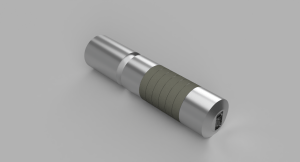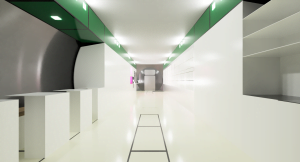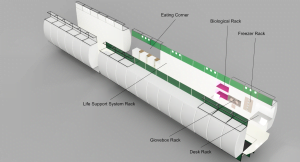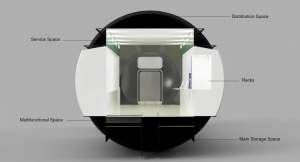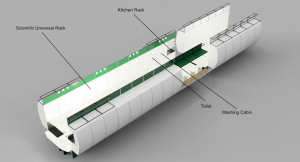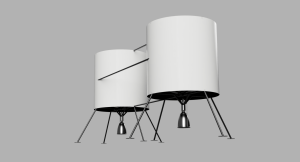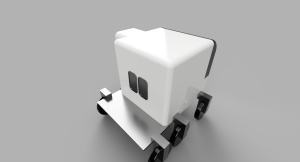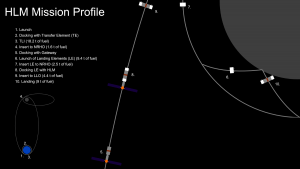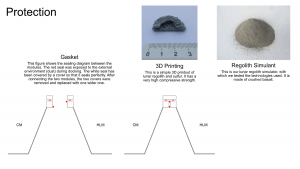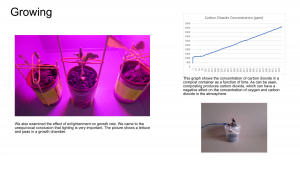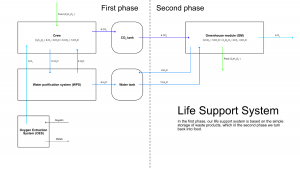Moon Camp Pioneers Gallery 2020-2021
In Moon Camp Pioneers each team’s mission is to 3D design a complete Moon Camp using Fusion 360. They also have to explain how they will use local resources, protect astronauts from the dangerous of space and describe the living and working facilities.
Team: AMAR
Nad Aleji Prague Czech Republic 15, 14 or younger First Place – ESA Member States
External viewer for 3d project
|
Project description
Our goal is to design a self-sufficient base that can be implemented in the next 10 years. Our project is based on real measurements and experiments, as well as on already proven existing techniques.
The base is able to permanently accommodate a four-member crew, which will change after half a year. Our 3D model contains the first two modules of the base: the self-sufficient habitation and laboratory module (HLM) and the cargo module (CM). HLM is not yet very comfortable for the crew, because it only has to test technologies (plant cultivation, fuel production using ISRU, crew training …), which will be used for the future construction of a greenhouse module (GM) and a large habitation module (LHM), which connects to the base. A pressurized vehicle (PR) is connected to the CM. After the GM is connected and we will be able to produce the fuel on the Moon, it will be possible to supply the Gateway station with food and water. |
|||
|
Where do you want to build your Moon Camp?
We plan to build our base at the south pole of the moon, specifically on the edge of Shackleton Crater. This place is advantageous due to the almost permanent lighting and the nearby water deposits. The Artemis program is also heading to the south pole of the Moon, and the Gateway Station orbits to land here, so the site will also be well researched and preparations may be made for the arrival of our base. In the middle of the crater, there is complete darkness and low temperature, which will allow unique undisturbed astronomical observations. How do you plan to build your Moon Camp? Describe the techniques and materials you would use.
For the construction of our base, we plan to use local resources, which we will process using flexible construction methods, such as 3D printing. In the next phase, the crew will arrive. CM will function as a temporary laboratory in which the suitability of current technologies that will be used in HLM will be verified. If the tests turn out well, nothing will prevent the HLM from starting on Ariane 6. It will be similar to CM. The environment on the Moon is very dangerous for the astronauts. Explain how your Moon Camp will protect them.
To protect against micrometeorites, we plan to use mainly ISRU using the 3D printing method. This method would print a Whipple shield. We tried several different methods (regolith + binder from Earth, regolith + sulfur, regolith + sulfur + iron). The best method we experimented with was sulfur lunar crete, but sulfur melts at low temperatures and sublimes. 3D printing on the moon needs more research. Explain how your Moon Camp will provide the astronauts with:
|
|||
|
Water
|
Food
|
Electricity
|
Air
|
|
We will obtain water from lunar ice, then clean and recycle it, thus minimizing the load brought from Earth. |
The food will be transported by Dragon XL from Earth in the first phase. It connects to the Gateway and the cargo is transferred to the CM. In the second phase, we will grow food in GM. The substrate is likely to consist of cleaned regolith and compost and astronaut waste. We are still researching the effect of composting on the atmosphere. |
We will use solar panels to produce energy. During the lighting of the solar panels, fuel (hydrogen and oxygen) will be produced from the water by electrolysis. As soon as the panels are shaded, electricity is generated in the hydrogen cells. We are also considering using thermoelectric generators, which would take advantage of extreme temperature differences on the Moon. |
In the first phase, we will obtain oxygen by extraction from regolith. Metals are formed as a waste product. We will capture carbon dioxide from the atmosphere and store it in a large tank (the crew will also produce more water than they consume, so we will also have a water tank). |
|
Explain what would be the main purpose of your Moon Camp (for example: commercial, scientific, and/or tourist purposes).
Our base has two main missions: to conduct experiments and prepare the Moon for further settlement. But every project needs financial resources, so we would provide space to carry out commercial experiments, and we can also sell regolith. We hope that in this way we will be able to gain at least some financial self-sufficiency for the base. In the later stages of colonization, we would like to produce at the base from local sources, and launch small satellites. |
|||
|
Describe a day on the Moon for your Moon Camp astronaut crew.
After waking up at 6:00, the astronaut performs morning hygiene and then moves the sample from the biological rack (BR) to the freezer (FR). At 6:30 there is a shared breakfast in the lounge. Each astronaut has his own table where he can have personal belongings. They have bread brought from Earth with some vegetables from a small experimental garden (SEG). After breakfast, preparations for extravehicular activity (EVA) will take place, and at 7:00 the astronaut, along with another, is preparing CM and LE for tomorrow’s supply flight to the Gateway. This includes cable connections, engine inspection and refueling preparation. They will also install experimental TEG. At 12:00, the second part of the crew has lunch, while the other two still perform EVA. At 13:00, our astronaut returns from EVA and, together with the other, takes lunch and a lunch break extended until 14:30. Because he performed physically demanding EVA, he only trains for half an hour until 15:00. This is followed by an inspection of the station’s systems, which includes checking the station’s wiring, filter condition, tightness of connections and checking for dust. This is very important and our base includes a number of measures to ensure that dust does not get inside and all joints seal well. During the inspection, he finds that one of the filters is already too clogged, so he lifts one floorboard to remove the spare. He’s done at 16:00 and can now do commercial experiments. The first examines the effect of sixth gravity on the mixing of metals in alloys. The astronaut launches and checks it. Then he can do more experiments. At 17:00 he will start a more demanding analysis of samples in a glove box (GBR). It will take him until 19:00. Then the whole crew will meet for dinner, followed by reading the instructions for tomorrow. From 19:00 to 21:00, the astronaut has time for evening hygiene and has free time. He opens the floor and goes to his bed at 9:00 p.m. |
|||


